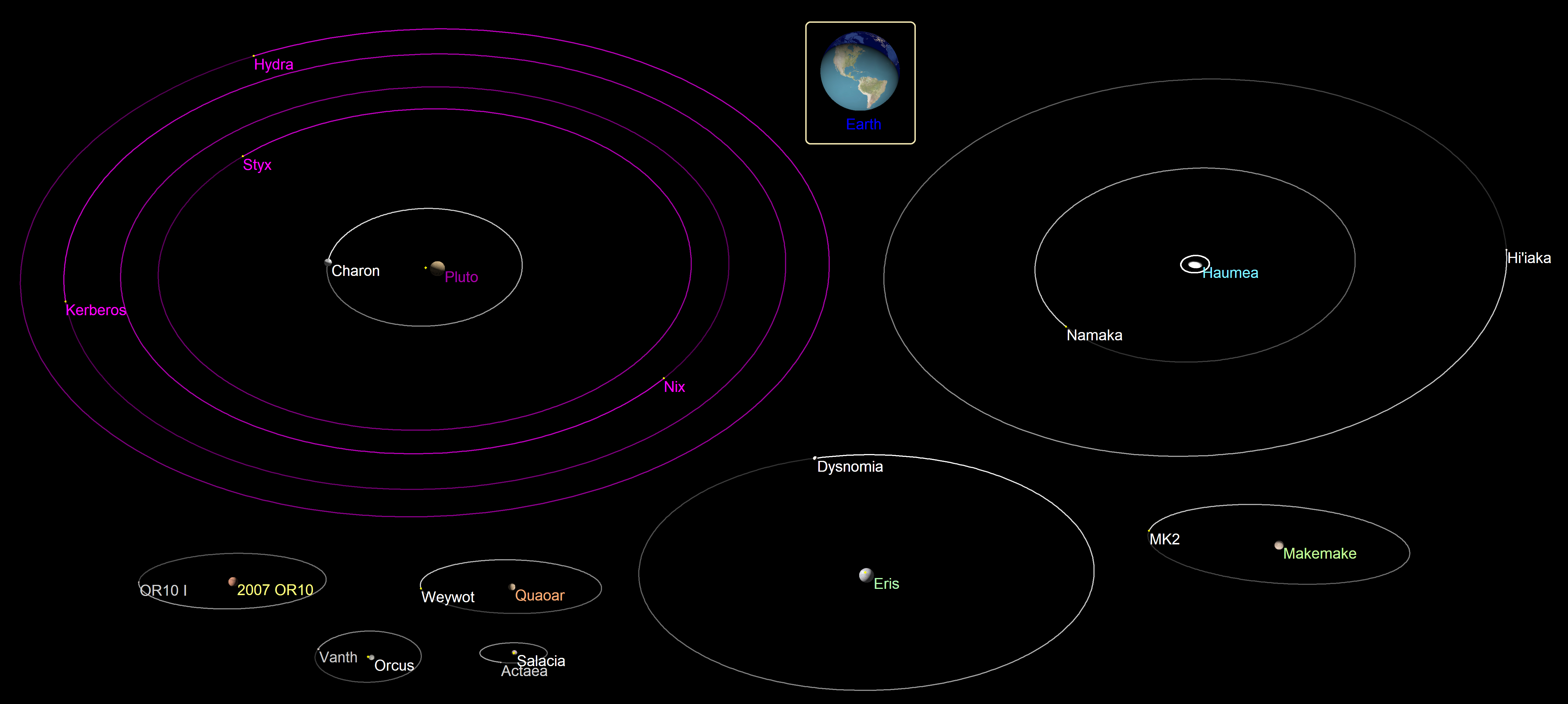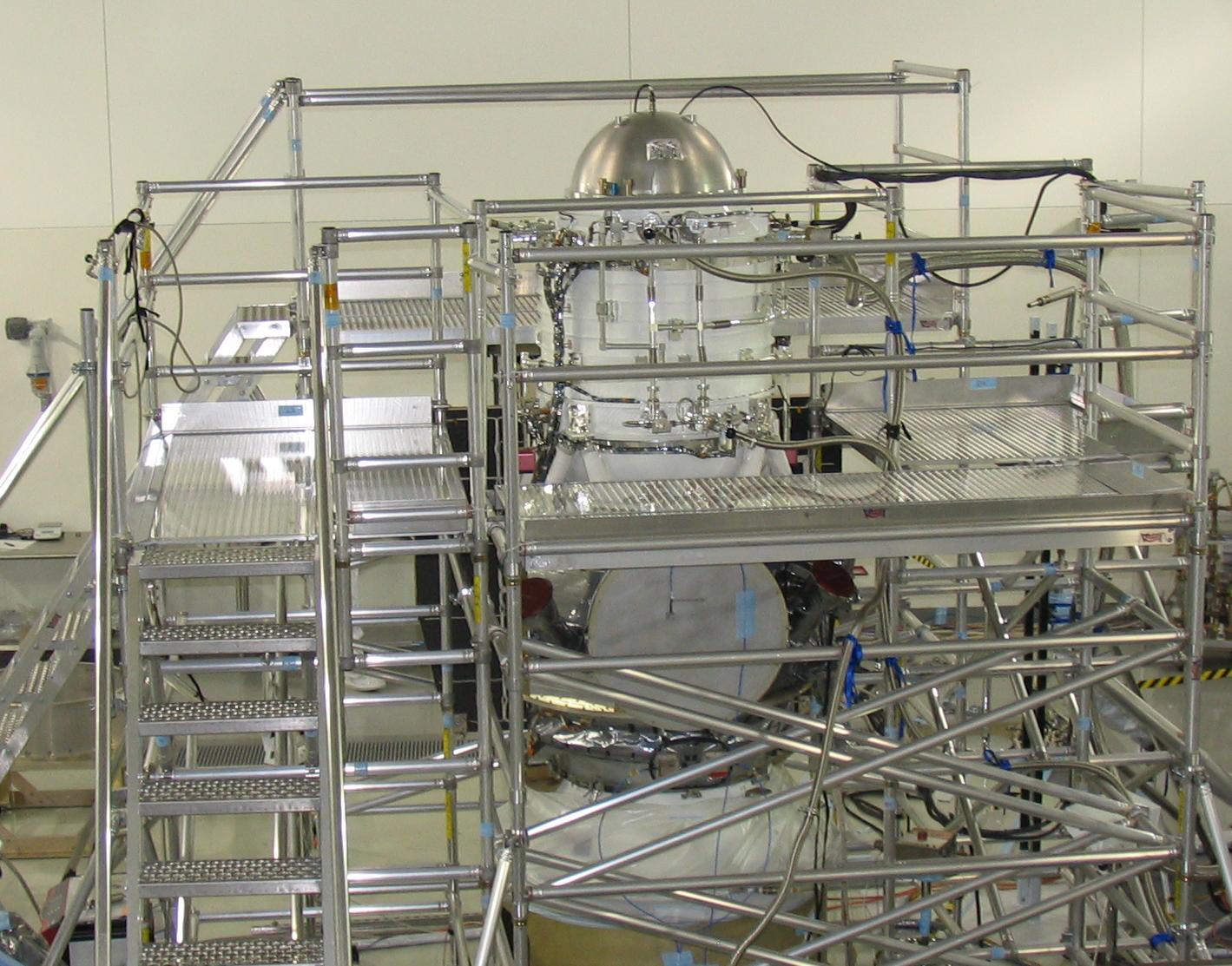|
9617 Grahamchapman
9617 Grahamchapman, provisional designation , is a binary Florian asteroid from the inner regions of the asteroid belt, approximately 2.8 kilometers in diameter. The asteroid was discovered on 17 March 1993, during the Uppsala–ESO Survey of Asteroids and Comets (UESAC) at ESO's La Silla Observatory in northern Chile. It was named for actor and Monty Python member, Graham Chapman. Orbit and classification Grahamchapman is a member of the Flora family, one of the largest collisional groups of stony asteroids. It orbits the Sun in the inner main-belt at a distance of 2.0–2.5 AU once every 3 years and 4 months (1,211 days). Its orbit has an eccentricity of 0.11 and an inclination of 6 ° with respect to the ecliptic. A first precovery was taken at Palomar Observatory in 1951, extending the body's observation arc by 42 years prior to its official discovery observation at La Silla. Physical characteristics Diameter and albedo According to the survey carried out b ... [...More Info...] [...Related Items...] OR: [Wikipedia] [Google] [Baidu] |
Orbital Eccentricity
In astrodynamics, the orbital eccentricity of an astronomical object is a dimensionless parameter that determines the amount by which its orbit around another body deviates from a perfect circle. A value of 0 is a circular orbit, values between 0 and 1 form an elliptic orbit, 1 is a parabolic escape orbit (or capture orbit), and greater than 1 is a hyperbola. The term derives its name from the parameters of conic sections, as every Kepler orbit is a conic section. It is normally used for the isolated two-body problem, but extensions exist for objects following a rosette orbit through the Galaxy. Definition In a two-body problem with inverse-square-law force, every orbit is a Kepler orbit. The eccentricity of this Kepler orbit is a non-negative number that defines its shape. The eccentricity may take the following values: * circular orbit: ''e'' = 0 * elliptic orbit: 0 < ''e'' < 1 * |
Minor-planet Moon
A minor-planet moon is an astronomical object that orbits a minor planet as its natural satellite. , there are 457 minor planets known or suspected to have moons. Discoveries of minor-planet moons (and binary objects, in general) are important because the determination of their orbits provides estimates on the mass and density of the primary, allowing insights into their physical properties that are generally not otherwise accessible. Several of the moons are quite large compared to their primaries: 90 Antiope, Mors–Somnus and Sila–Nunam (95%), Patroclus–Menoetius, Altjira and Lempo–Hiisi (90%, with Lempo–Paha at 50%). The largest known minor-planet moon in ''absolute'' size is Pluto's largest moon Charon, which itself has about half the diameter of Pluto. The first modern era mention of the possibility of an asteroid satellite was in connection with an occultation of the bright star Gamma Ceti by the asteroid 6 Hebe in 1977. The obse ... [...More Info...] [...Related Items...] OR: [Wikipedia] [Google] [Baidu] |
Photometry (astronomy)
Photometry, from Greek '' photo-'' ("light") and '' -metry'' ("measure"), is a technique used in astronomy that is concerned with measuring the flux or intensity of light radiated by astronomical objects. This light is measured through a telescope using a photometer, often made using electronic devices such as a CCD photometer or a photoelectric photometer that converts light into an electric current by the photoelectric effect. When calibrated against standard stars (or other light sources) of known intensity and colour, photometers can measure the brightness or apparent magnitude of celestial objects. The methods used to perform photometry depend on the wavelength region under study. At its most basic, photometry is conducted by gathering light and passing it through specialized photometric optical bandpass filters, and then capturing and recording the light energy with a photosensitive instrument. Standard sets of passbands (called a photometric system) are defined ... [...More Info...] [...Related Items...] OR: [Wikipedia] [Google] [Baidu] |
Ondřejov Observatory
The Ondřejov Observatory (; cs, Observatoř Ondřejov) is the principal observatory of the Astronomical Institute () of the Academy of Sciences of the Czech Republic. It is located near the village of Ondřejov, southeast of Prague, Czech Republic. It has a wide telescope, which is the largest in the Czech Republic. History The facility was constructed in 1898, by Czech amateur astronomer and entrepreneur Josef Jan Frič as a private observatory. On 28 October 1928, he donated the facility to the Czechoslovak state to celebrate the tenth anniversary of its independence. The observatory, located at an altitude of , away from the air and light pollution of urban Prague, was administered by Charles University until the founding of the Czechoslovak Academy of Sciences in 1953, which from then on operated it as part of its Astronomical Institute in conjunction with other Czechoslovak observatories. In 1967, a telescope measuring in width was added to the observatory, which at ... [...More Info...] [...Related Items...] OR: [Wikipedia] [Google] [Baidu] |
Absolute Magnitude
Absolute magnitude () is a measure of the luminosity of a celestial object on an inverse logarithmic astronomical magnitude scale. An object's absolute magnitude is defined to be equal to the apparent magnitude that the object would have if it were viewed from a distance of exactly , without extinction (or dimming) of its light due to absorption by interstellar matter and cosmic dust. By hypothetically placing all objects at a standard reference distance from the observer, their luminosities can be directly compared among each other on a magnitude scale. As with all astronomical magnitudes, the absolute magnitude can be specified for different wavelength ranges corresponding to specified filter bands or passbands; for stars a commonly quoted absolute magnitude is the absolute visual magnitude, which uses the visual (V) band of the spectrum (in the UBV photometric system). Absolute magnitudes are denoted by a capital M, with a subscript representing the filter band used for mea ... [...More Info...] [...Related Items...] OR: [Wikipedia] [Google] [Baidu] |
Petr Pravec
Petr Pravec (born September 17, 1967) is a Czech astronomer and a discoverer of minor planets, born in Třinec, Czech Republic. Pravec is a prolific discoverer of binary asteroids, expert in photometric observations and rotational lightcurves at Ondřejov Observatory. He is credited by the Minor Planet Center with the discovery and co-discovery of 350 numbered minor planets, and is leading the effort of a large consortium of stations called "BinAst" to look for multiplicity in the near-Earth objects and inner main-belt populations. He is a member of the ''Academy of Sciences of the Czech Republic''. The main-belt asteroid 4790 Petrpravec 4790 Petrpravec ( ''prov. designation'': ) is a carbonaceous background asteroid from the central regions of the asteroid belt, approximately in diameter. It was discovered on 9 August 1988, by American astronomer Eleanor Helin at the Palomar ..., discovered by Eleanor Helin in 1988, is named after him. The official naming citation ... [...More Info...] [...Related Items...] OR: [Wikipedia] [Google] [Baidu] |
Astronomical Albedo
Albedo (; ) is the measure of the diffuse reflection of sunlight, solar radiation out of the total solar radiation and measured on a scale from 0, corresponding to a black body that absorbs all incident radiation, to 1, corresponding to a body that reflects all incident radiation. Surface albedo is defined as the ratio of Radiosity (radiometry), radiosity ''J''e to the irradiance ''E''e (flux per unit area) received by a surface. The proportion reflected is not only determined by properties of the surface itself, but also by the spectral and angular distribution of solar radiation reaching the Earth's surface. These factors vary with atmospheric composition, geographic location, and time (see position of the Sun). While bi-hemispherical reflectance is calculated for a single angle of incidence (i.e., for a given position of the Sun), albedo is the directional integration of reflectance over all solar angles in a given period. The temporal resolution may range from seconds (as ob ... [...More Info...] [...Related Items...] OR: [Wikipedia] [Google] [Baidu] |
NEOWISE
Wide-field Infrared Survey Explorer (WISE, observatory code C51, Explorer 92 and SMEX-6) is a NASA infrared astronomy space telescope in the Explorers Program. It was launched in December 2009, and placed in hibernation mode in February 2011, before being re-activated in 2013 and renamed the Near-Earth Object Wide-field Infrared Survey Explorer (NEOWISE). WISE discovered thousands of minor planets and numerous star clusters. Its observations also supported the discovery of the first Y-type brown dwarf and Earth trojan asteroid. WISE performed an all-sky astronomical survey with images in 3.4, 4.6, 12 and 22 μm wavelength range bands, over ten months using a diameter infrared telescope in Earth orbit. After its solid hydrogen coolant depleted, a four-month mission extension called NEOWISE was conducted to search for near-Earth objects (NEO) such as comets and asteroids using its remaining capability. The WISE All-Sky (WISEA) data, including processed images, sour ... [...More Info...] [...Related Items...] OR: [Wikipedia] [Google] [Baidu] |
Wide-field Infrared Survey Explorer
Wide-field Infrared Survey Explorer (WISE, observatory code C51, Explorer 92 and SMEX-6) is a NASA infrared astronomy space telescope in the Explorers Program. It was launched in December 2009, and placed in hibernation mode in February 2011, before being re-activated in 2013 and renamed the Near-Earth Object Wide-field Infrared Survey Explorer (NEOWISE). WISE discovered thousands of minor planets and numerous star clusters. Its observations also supported the discovery of the first Y-type brown dwarf and Earth trojan asteroid. WISE performed an all-sky astronomical survey with images in 3.4, 4.6, 12 and 22 μm wavelength range bands, over ten months using a diameter infrared telescope in Earth orbit. After its solid hydrogen coolant depleted, a four-month mission extension called NEOWISE was conducted to search for near-Earth objects (NEO) such as comets and asteroids using its remaining capability. The WISE All-Sky (WISEA) data, including processed images, so ... [...More Info...] [...Related Items...] OR: [Wikipedia] [Google] [Baidu] |
Observation Arc
In observational astronomy, the observation arc (or arc length) of a Solar System body is the time period between its earliest and latest observations, used for tracing the body's path. It is usually given in days or years. The term is mostly used in the discovery and tracking of asteroids and comets. Arc length has the greatest influence on the accuracy of an orbit. The number and spacing of intermediate observations has a lesser effect. Short arcs A very short arc leaves a high uncertainty parameter. The object might be in one of many different orbits, at many distances from Earth. In some cases, the initial arc was too short to determine if the object was in orbit around the Earth, or orbiting out in the asteroid belt. With a 1-day observation arc, was thought to be a trans-Neptunian dwarf planet, but is now known to be a 1 km main-belt asteroid. With an observation arc of 3 days, was thought to be a Mars-crossing asteroid that could be a threat to Earth, but was ... [...More Info...] [...Related Items...] OR: [Wikipedia] [Google] [Baidu] |
Palomar Observatory
Palomar Observatory is an astronomical research observatory in San Diego County, California, United States, in the Palomar Mountain Range. It is owned and operated by the California Institute of Technology (Caltech). Research time at the observatory is granted to Caltech and its research partners, which include the Jet Propulsion Laboratory (JPL), Yale University, and the National Optical Observatories of China. The observatory operates several telescopes, including the Hale Telescope, the Samuel Oschin Telescope (dedicated to the Zwicky Transient Facility, ZTF), the Palomar Telescope, and the Gattini-IR telescope. Decommissioned instruments include the Palomar Testbed Interferometer and the first telescopes at the observatory, an Schmidt camera from 1936. History Hale's vision for large telescopes and Palomar Observatory Astronomer George Ellery Hale, whose vision created the Palomar Observatory, built the world's largest telescope four times in succession. He publi ... [...More Info...] [...Related Items...] OR: [Wikipedia] [Google] [Baidu] |





